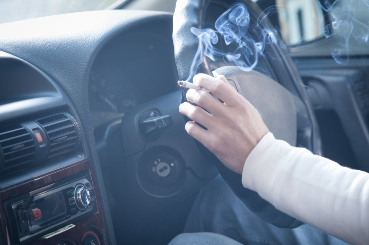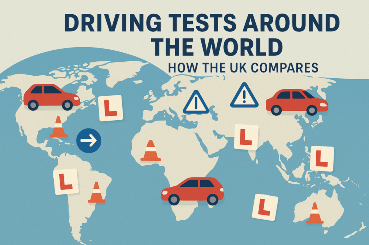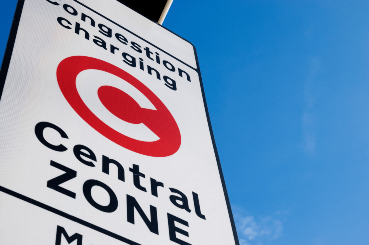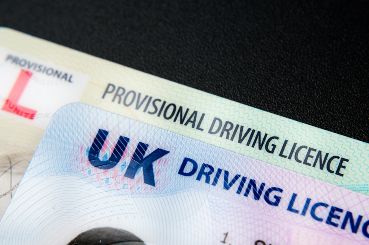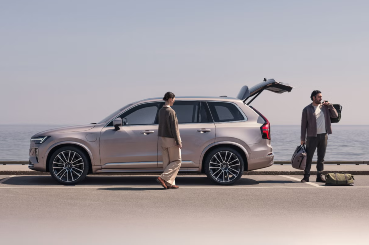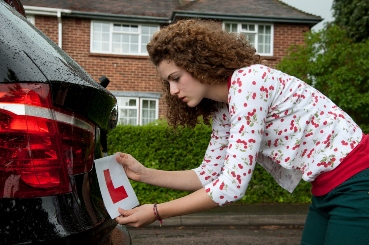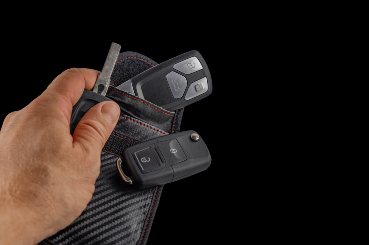Do you ever find yourself having a car service and thinking “What does that mean”? Well, that’s okay because you aren’t alone! It’s so easy to get lost in automotive jargon used in car garages and when dealing with your aftersales queries!
That is why we have created a guide on all the most common terminology, acronyms and abbreviations you may find yourself coming across. Don’t get scared off by the fancy words, read the guide about what the car servicing jargon means.

A
Air filter:
The Air Filter in a car is something that catches dirt, dust and debris which could damage your engine or reduce performance. Air filters should be replaced in line with the service schedule recommended by the manufacturer.
Anti-lock Braking System (ABS):
Quite a common mystery we all wonder about is the ABS light that might flash on a dashboard. This is designed to help the driver maintain control of the vehicle under heavy braking by stopping the wheels from locking or sliding, which can retain steering control in an emergency.
An ABS system rapidly applies, releases and re-applies the brakes to slow you down without locking the wheels.
Autonomous Emergency Braking (AEB):
An AEB safety system scans the road ahead and can apply the brakes automatically to avoid a collision at low speeds or reduce an impact at higher speeds.
Alternator:
This converts mechanical energy from the engine into an alternating electrical current, which is stored in the battery and powers the vehicle’s electrical systems. It’s the alternator’s job to keep your battery topped up, so if it’s working correctly you should never have a flat battery – unless you leave the lights on all night. (If you have a hybrid or electric vehicle you probably won’t have an alternator).
It can be a relatively difficult job to do, and expensive if this goes – but with Stoneacre Service plans, all that worry about the price can be reduced significantly with monthly payments before your annual service in case things like the alternator is damaged.
Automatic Transmission Fluid:
For automatic car drivers, it’s essential to always make sure the transmission fluid level is always topped up. This fluid cools the transmission system and lubricates moving parts.
B
Big End:
This phrase is used to describe when a large bearing in the engine has worn out and failed. You’ll know if this is the case because there’s likely to be a loud knocking noise from under the bonnet, especially when you accelerate.
It’s serious, but might not be completely ‘game over’ for your car because it may be possible to fit a replacement engine, but just keep in mind it might be costly.
Brake Disc:
A metal disc coupled to the wheel is clamped between two brake pads in a braking system. As the brake disc slows down due to friction, so does the car’s wheel.
Brake discs are replaced in pairs to ensure vehicle stability is maintained under braking to ensure that any contaminates or uneven wear on the old pads aren’t transferred to the new discs.
Brake Pad:
The brake pads are steel plates with a pad of hard-wearing friction material bonded to one side. When the brakes are applied the hydraulic pistons in the brake calliper push the brake pads against the brake disc.
Brake pads generally require replacement when the friction material wears down to a pre-set level, although they can be affected by external contamination from leaking brake fluid or oil.
Bushes:
These are small ‘cushions’ made of rubber which are attached to suspension parts. They work like knees or elbows in the human body, absorbing bumps in the road and preventing metal-to-metal contact.
Because they are rubber, they can perish and wear out, so do need to be replaced now and again. They are not expensive, though replacement time will depend on the make and model of the car.
C
Cam belt (See Timing Belt):
A critical piece of the engine normally requires significant dismantling and special tools to replace. It can be an extremely difficult job to perform, especially when the timing belt is replaced it often makes sense to replace ancillary items like a water pump at the same time.
Catalytic converter:
These are fitted to petrol cars and convert poisonous exhaust emissions into carbon dioxide, oxygen, nitrogen and water. They should last the lifetime of the car but can fail in some circumstances, usually because of a fault somewhere else on the car causing a domino effect of failures.
They are expensive items and there have also been instances of catalytic converter theft.
Clutch:
The clutch connects your engine to your gearbox. In a manual car, when you press the clutch pedal, the clutch disconnects the engine from the gearbox temporarily so you can change from one gear to another. The clutch will eventually wear out with use, so will need replacing.
Replacement of the clutch requires the removal of the gearbox so it can be a labour-intensive job. Modern clutch systems can require specialist tools to properly align and set up.
Coolant (also known as antifreeze or anti-freeze):
This fluid helps to keep the engine operating at the right temperature – so it’s significant to keep the reservoir topped up. It also prevents scale building up and protects against corrosion in the cooling system.
Like engine oil, there are many varieties, and it is important to use the correct one for the vehicle to prevent engine damage.
Cooling Fan:
The cooling fan pulls air into the vehicle’s radiator, helping to cool the coolant, or antifreeze fluid, inside the cooling system and maintain the engine at the correct operating temperature.
Crankshaft:
Labelled as the backbone of the internal combustion engine, the crankshaft is responsible for the proper operation of the engine and converting the up-and-down motion of the pistons and connecting rods into rotary motion.
Cylinder:
Another vital part of an engine, a cylinder is a tube or chamber where fuel is combusted and power is generated. Inside the cylinder there is a piston which is forced down during combustion, generating power to move your vehicle.
Cylinder head:
A component that sits on top of the cylinder block, closing it to create the combustion chambers. There must be good sealing between it and the block. The cylinder head contains the valves that let air, fuel and exhaust flow in and out of the cylinder.
Continuously Variable Transmission (CVT):
This is a type of automatic gearbox, often used in hybrid cars.
D
Dampers (also known as shock absorbers):
The dampers are mechanical or hydraulic devices designed to absorb bumps, or ‘shocks’, in the road. Dampers help to deliver a smoother and more comfortable ride.
Diesel particulate filter (DPF):
A device that removes small particles from the exhaust emissions of diesel engines. Cars fitted with one are designed to burn this soot and turn it to ash by running at high speeds for an extended period: above 40mph for 10 minutes or more. If you only make short journeys in stop/start traffic, the filter can become blocked and fail.
Diagnostic check:
Performed by a vehicle technician or mechanic, this is to check for vehicle sensor faults. A specialised code reader is plugged into the car’s Electronic Control Units (ECU) to detect problems with your vehicle which may be difficult to spot manually.
Differential:
A mechanical device that allows the driven wheels of a car to turn at different speeds, splitting engine power between the wheels so that the outside wheel in a corner can rotate faster than the inside wheel.
Drive (or Auxiliary) belt:
Historically referred to as a fan belt, this strong rubber belt drives multiple mechanical parts at once which can include power steering pumps, alternators, water pumps and air conditioning.
E
Engine oil:
A vital form of lubricating oil that reduces wear and tear on moving parts of your engine. There are different oils for different engines, so make sure you use the right one.
Electronic Control Unit (ECU):
Most modern vehicles have at least one onboard computer known as an ECU – a device which controls all the electronic features in a car.
If a warning light appears or another fault develops on your car, a vehicle technician can plug into the ECU to access any fault codes that may have been generated.
Electronic Stability Control (ESC):
Electronic stability control is a safety feature which uses a collection of sensors to help detect and counter any loss of grip or traction which could cause the vehicle to over or under-steer.
Exhaust:
A car’s exhaust system controls noise, directs fumes away from the driver and passengers, reduces the air pollution your car produces and improves the performance of the engine.
There are several parts to the exhaust system, including the manifold, catalytic converter, sensors, silencer and exhaust pipe and every part must function properly for it to work perfectly.
F
Fuel filter:
A replaceable metal or plastic filter prevents particles and contaminants in the fuel tank from reaching the fuel pumps or injectors and blocking them. These must be replaced at the correct intervals to avoid costly damage to the fuel system.
Fuel pump:
This small pump sends the fuel from the tank to the engine. Vehicles with direct injection fuel systems can have multiple pumps to generate the very high pressures used in those systems.
G
Glow plug:
The glow plug is an electrical heating device that helps diesel engines start from cold. They help achieve the correct temperature by warming the air in the combustion chamber.
Each cylinder usually has its own glow plug. On modern diesels, they are also used to maintain emission standards.
H
Head gasket:
A leak-proof seal between an engine’s cylinder block and cylinder head. It keeps the various fluids and gases in the correct chambers of the engine.
I
Ignition system:
An electrical component is used to transform the battery’s voltage to the thousands of volts needed to create an electric spark in the spark plugs to ignite the air/fuel mixture in internal combustion engines.
Immobiliser:
The car immobiliser is an electronic security device that stops your car from being started or taken without its key – so it makes life pretty difficult for would-be thieves. You can check your car’s handbook to see if it has a factory-fitted immobiliser as standard.
J
K
L
Logbook:
Also known as a V5C document, it indicates that a person is the registered keeper of a vehicle — not the owner. The car could be owned by a third party such as a finance company or fleet operator.
The person named on the V5C is legally responsible for the vehicle. As such, they’ll have to deal with things like parking tickets, speeding and contact with the police if a motoring law is broken. When you buy or sell a car, there are parts of the V5C for both the vendor and buyer to complete.
M
Master cylinder:
This is a cylinder that contains a piston and hydraulic fluid, directly linked to a foot pedal and used to generate the pressure to operate the brake or clutch.
MOT:
A test which, by law, must be carried out each year on all road vehicles in the UK that are more than three years old. It is a test of vehicle safety, roadworthiness and exhaust emissions. Stoneacre has over 50 approved testing centres across England and Wales for your car’s MOT.
N
O
Original Equipment Manufacturer (OEM):
A term used to categorise parts assembled and installed during the construction of a vehicle.
Oil filter:
A small filter fitted to an engine’s lubricating system is used to remove dirt and particles from the engine oil.
Oil pump:
A pump used to circulate engine oil under pressure to the engine, lubricating moving parts.
Oversteer (also see Understeer):
Sometimes occurring on rear-wheel drive cars, it’s when a driver applies more power than the tyres can deal with. This makes the tyres slip as they try to push in the opposite direction to the turn, kicking the back end of the car out.
Needless to say, ‘losing the back end’ of a car like this is dangerous, so drivers of RWD cars should be especially cautious in slippery conditions.
P
Power steering:
Steering that is aided by electric or hydraulic motors, reducing the effort required by the driver to steer the car, particularly at low speed. Drive a classic car without power steering and you realise it’s a more physical experience.
Q
R
Radiator:
The radiator prevents your car from overheating. It’s full of fluid – normally antifreeze – which runs through the engine, absorbing the heat the engine produces.
It then comes back to the radiator, at the front of the car, and is cooled by the air rushing over it, and a fan.
S
Shock absorbers (also known as dampers):
A shock absorber is a mechanical or hydraulic device designed to absorb bumps, or ‘shocks’, in the road. Shock absorbers help to deliver a smoother and more comfortable ride.
Spark plugs:
These create the spark that ignites the mixture of fuel and air in your engine. If the spark plugs aren’t working, the car won’t start when you turn the ignition.
Starter motor:
As its name suggests, this small electrical motor is used to start the engine. It uses power from the battery to turn the crankshaft via the flywheel to start the engine.
Steering rack:
Connecting the two front wheels, the system moves left and right to turn the wheels.
T
Timing belt:
This rubber belt drives key moving parts of your engine, including the camshafts, ensuring everything is running at the right speed. For this reason, it’s sometimes known as the cam belt.
An old or well-worn timing belt can snap and instantly cause massive amounts of damage to your engine, so it’s important that it’s changed in line with the manufacturer’s recommendations. Some cars have a chain instead of a belt, and they’re designed to last the car’s lifetime so generally won’t need replacing unless there’s a serious problem.
Traction control:
A system which monitors and regulates the speed at which the wheels are spinning, helping to keep all four wheels of the car gripped firmly to the road.
Tracking (Also known as front wheel alignment):
Tracking generally refers to the angle of the front wheels and is one of several geometry angles checked during a full wheel alignment.
U
V
W
Water Pump:
This is used to circulate coolant, or antifreeze, through the cooling system. It’s connected to the radiator and the engine by a series of hoses.
Wheel alignment (also known as tracking):
Wheel alignment is the process of adjusting components to a specified camber, toe, caster and ride height to balance the suspension and improve tyre wear. Misaligned wheel alignment can cause uneven and rapid tyre wear, worn suspension units and poor fuel economy.
Incorrect wheel alignment can also affect the operation of vehicle Advanced Driver Assistance Systems (ADAS).
Wheel balancing:
Correctly balanced wheels provide a smooth ride. Wheel balancing, which should be carried out when you are having a new tyre fitted or the tyre is removed for a puncture repair, involves adding weights to the wheel rims to ensure the weight is distributed evenly across the wheels and they spin smoothly without vibrations.
The cost of wheel balancing is generally included when you have a new tyre fitted.
X
Y
Z
Has this helped you out at all? Make sure to keep an eye out for more Car Jargon busting guides.
If you find yourself struggling with anything about Aftersales, check out our FAQ page or get in touch with us today.
